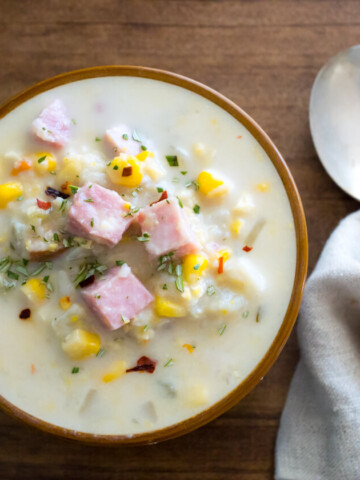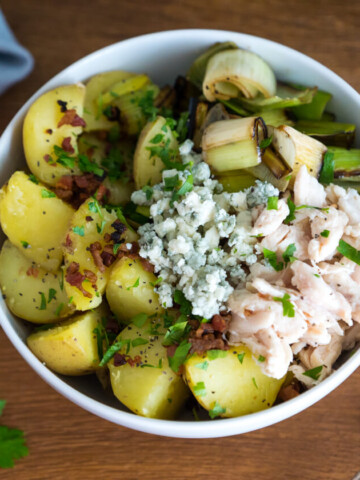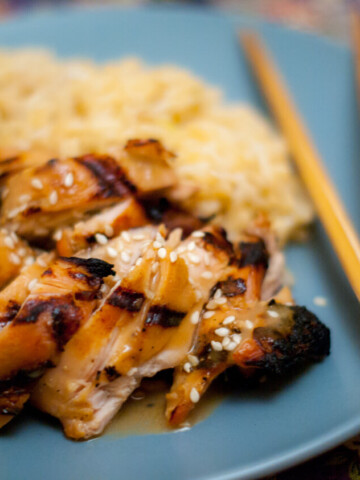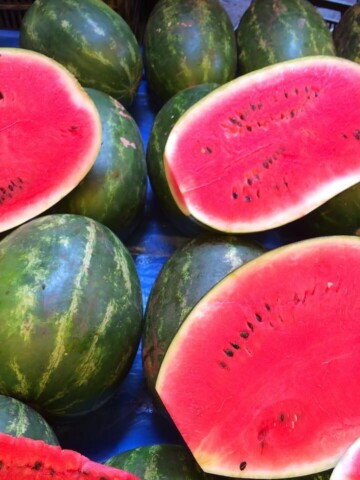It's time for the next installment of this year's Going with the Grain series. Today we're talking about millet. Even though millet is not a grain but a grass seed it is completely appropriate to include in this grain centric series. You may be familiar with the variety commonly used in commercial bird seed blends but millet is absolutely suitable for human consumption (buy your people food and bird food separately). I highly recommend adding millet to your regular rotation of starches.
By far, millet is one of the most forgiving grains I have in my kitchen. It only takes about 15 to 20 minutes to transform the tiny seeds into a starchy side dish. A single cup of millet cooked with 2 cups of water (or broth) should yield about 3 cups of cooked millet. The texture is somewhere between couscous and rice you might even call it bready. The flavor is mild, a little nutty, and can be easily adjusted by seasoning the cooking liquid. Inspired by the bready quality I often prepare millet so it tastes like dressing (or stuffing).
Simple Millet Dressing
- 1 cup hulled millet
- 2 cups water (may substitute broth)
- ½ teaspoon of Kosher salt
- 1 teaspoon dry Italian herbs
- Place all ingredients into a heavy-bottomed 2 quart sauce pan and bring to a boil. Once the liquid has begun to boil reduce the heat to low and cover (vent the lid for a minute or two if it starts to boil over). Allow the millet to simmer for 15 - 20 minutes until the liquid has been absorbed. Let it still an additional 5 minutes before gently fluffing with a fork.
- Optional addition: while the millet cooks, dice half a medium onion and two or three celery stalks. Sautée the vegetables with a teaspoon of olive oil and season with salt and pepper. Cook until the onion pieces begin to turn golden around the edges. Mix the sautéed vegetable mixture into the millet in the final step.
Beyond it's adaptable taste and pleasing texture, those tiny millet seeds are packed with nutrients. One quarter cup, or 55 grams, of unprepared hulled millet contains 200 calories, 2 grams of fat, 40 grams carbohydrates, 7 grams of protein, and a whopping 9 grams of fiber (source: Bob's Red Mill). Additionally, "millets are rich in B vitamins (especially niacin, B6 folic acid), calcium, iron, potassium, magnesium, and zinc" (source: wikipedia).

We tend to hear a lot about returning to eating like our grandparents. Well, move over grandma the history of millet is not counted in generations but in millennia! According to Wikipedia millet was a staple food in parts of Asia, including China and India, during prehistoric time. Cultivation of millet may even precede rice in that part of the world.
"For example, some of the earliest evidence of millet cultivation in China was found at Cishan (north). Cishan dates for common millet husk phytoliths and biomolecular components have been identified around 8300–6700 BC in storage pits along with remains of pit-houses, pottery, and stone tools related to millet cultivation. Evidence at Cishan for foxtail millet dates back to around 6500 BC. A 4,000-year-old well-preserved bowl containing well-preserved noodles made from foxtail millet and broomcorn millet was found at the Lajia archaeological site in China." -wikipedia
If you aren't sold on millet yet listen to this! Compared to other powerhouse grains millet is super affordable, around $1.30 - $1.50 per pound. I recently glanced down the bulk bin isle and noticed quinoa on sale for over $9.00 per pound.
For all these reasons millet has become one of our family's favorite quick side dishes. I always make extra because the leftovers can be incorporated into all sorts of new recipes. Speaking of which, check back later this week for a turkey-millet meatloaf recipe that will knock your socks off and the details of this months Going with the Grain giveaway!
Looking for more millet recipes? This spring roll inspired millet salad from Bob's Red Mill is a wonderfully refreshing and would make a terrific light lunch.







Leave a Reply